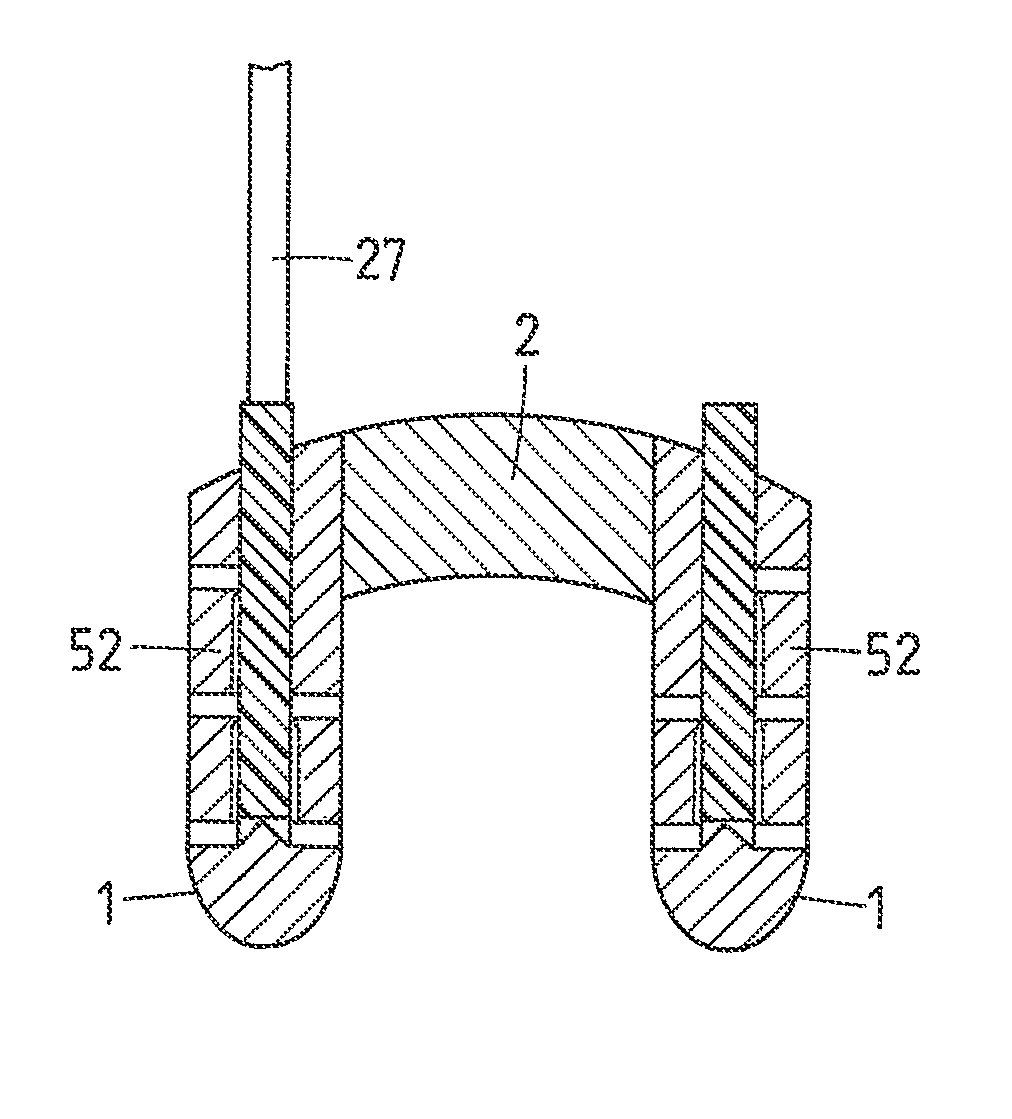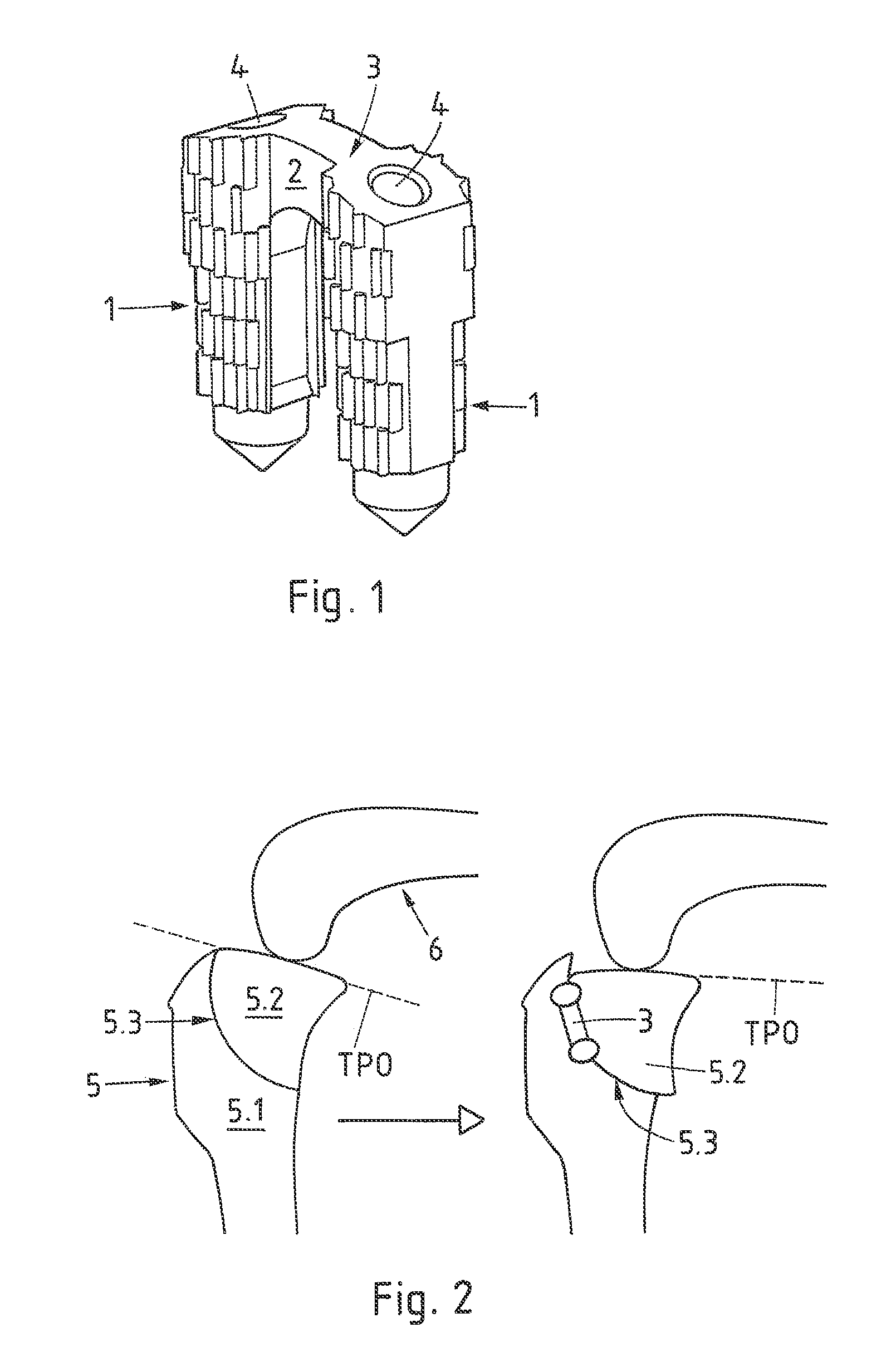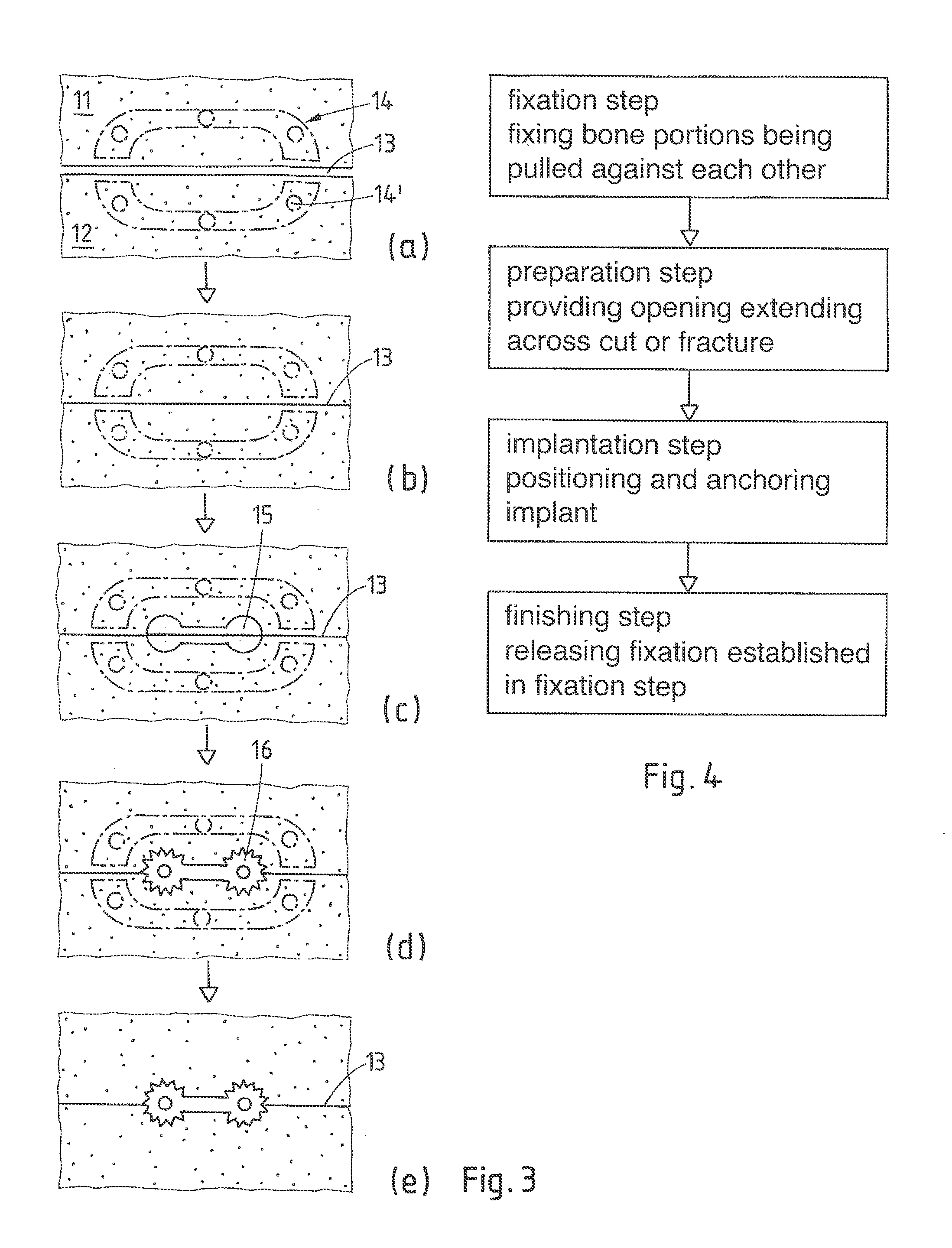Method and implant for stabilizing two bone portions separated by a cut or fracture
a technology of two bone segments and implants, applied in the field of medical technology, can solve the problems of limited efficiency and need for further surgery
- Summary
- Abstract
- Description
- Claims
- Application Information
AI Technical Summary
Benefits of technology
Problems solved by technology
Method used
Image
Examples
Embodiment Construction
[0062]FIG. 1 is a three-dimensional illustration of a preferred embodiment of the implant according to the invention. The implant comprises two anchoring pins 1 and a bridge portion 2, arranged between the proximal ends of the anchoring pins 1. The whole implant is preferably made of a resorbable thermoplastic polymer (e.g. of polylactide, preferably LR706 by Böhringer). The anchoring pins 1 are slightly tapering and comprise a pointed distal end, the surface of the slightly tapering region being equipped with energy directors e.g. in the form of short axial ridges arranged in a plurality of adjacent rings, wherein the ridges of one ring are staggered in relation to the ridges of the adjoining ring or rings. Similar arrangements of energy directors are described in the publication US 2008 / 0109007 the disclosure of which is enclosed herein by reference.
[0063]The opening provided for implantation of the implant according to FIG. 1, which opening reaches across the cut or fracture sepa...
PUM
 Login to View More
Login to View More Abstract
Description
Claims
Application Information
 Login to View More
Login to View More - R&D
- Intellectual Property
- Life Sciences
- Materials
- Tech Scout
- Unparalleled Data Quality
- Higher Quality Content
- 60% Fewer Hallucinations
Browse by: Latest US Patents, China's latest patents, Technical Efficacy Thesaurus, Application Domain, Technology Topic, Popular Technical Reports.
© 2025 PatSnap. All rights reserved.Legal|Privacy policy|Modern Slavery Act Transparency Statement|Sitemap|About US| Contact US: help@patsnap.com



